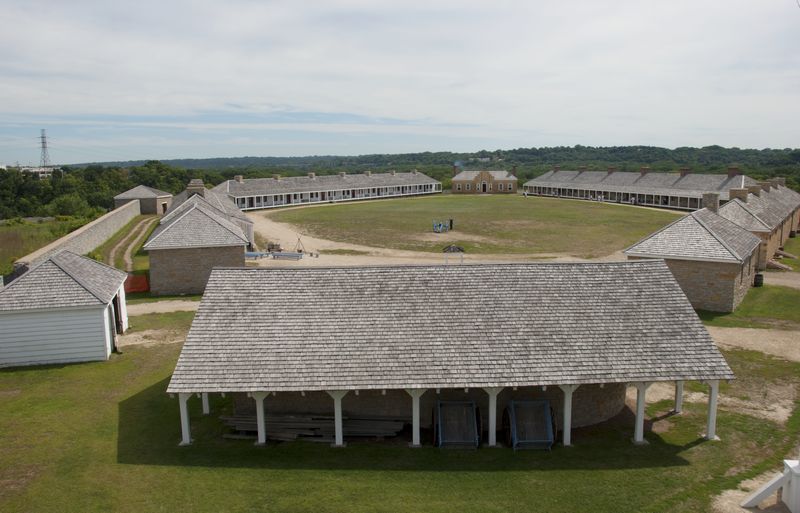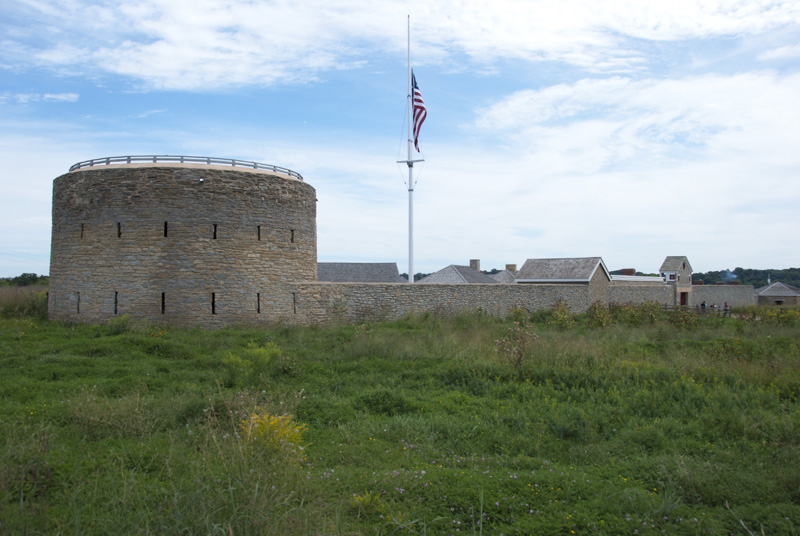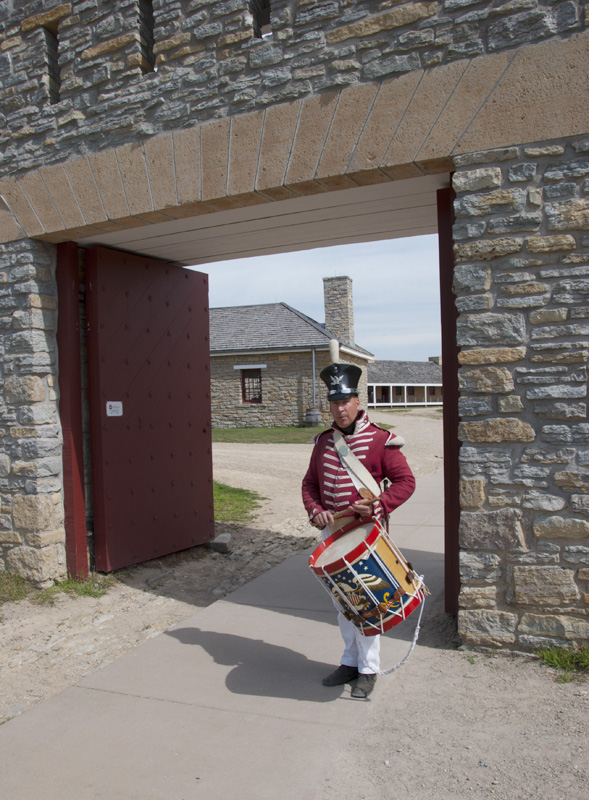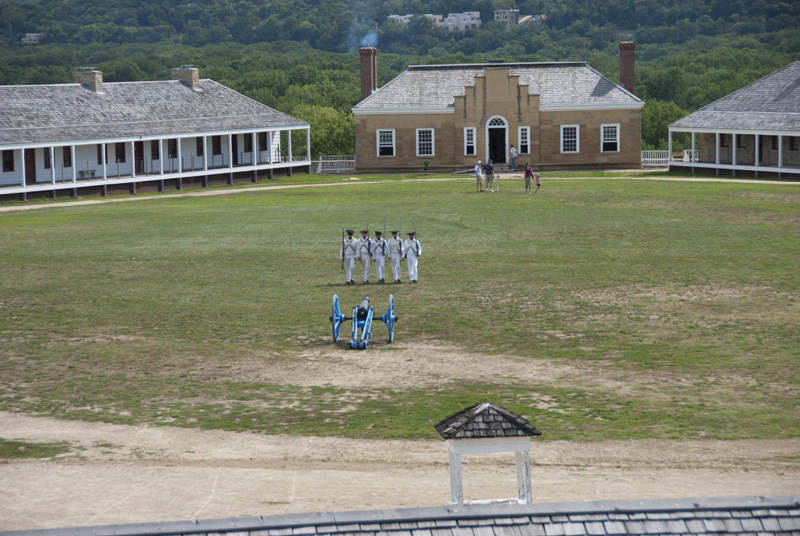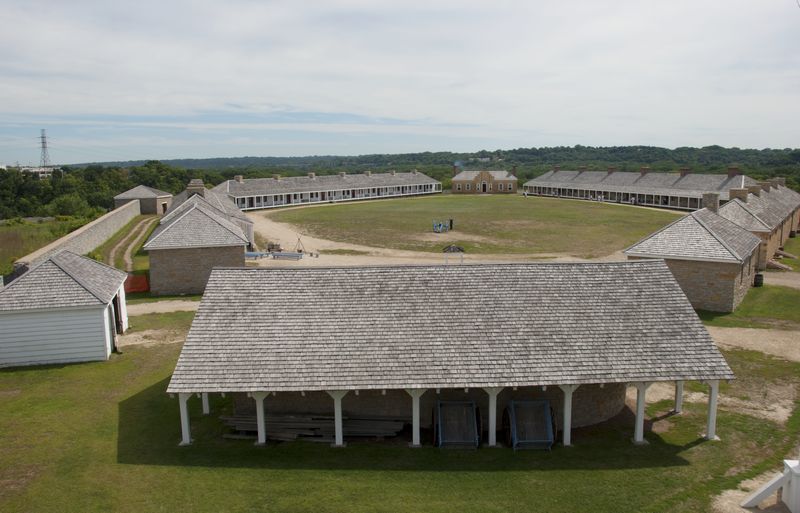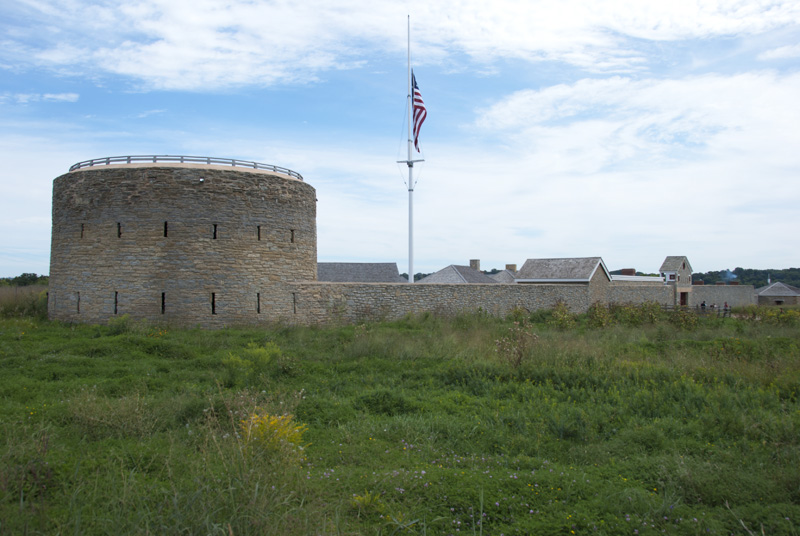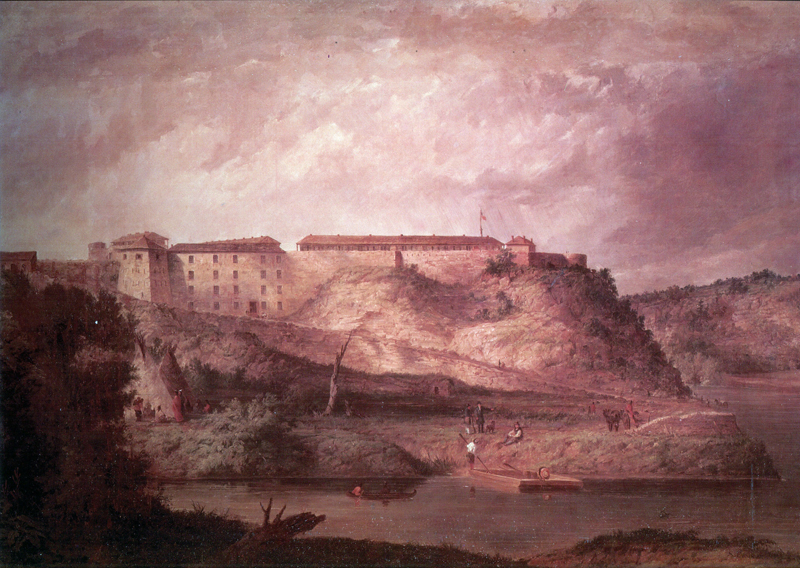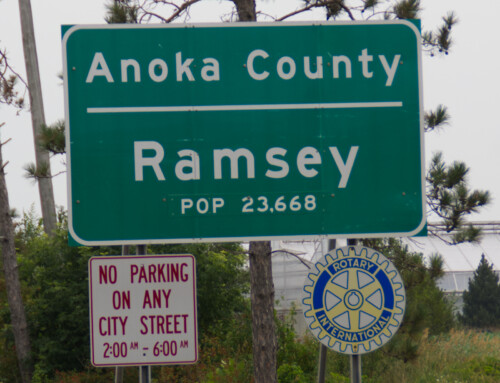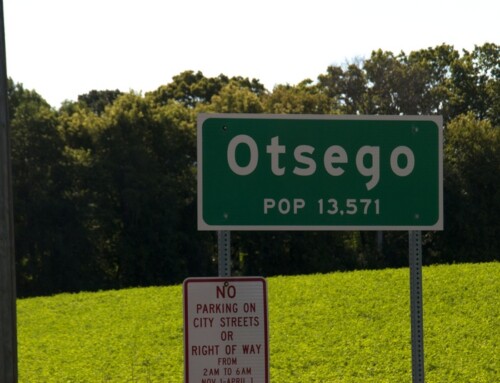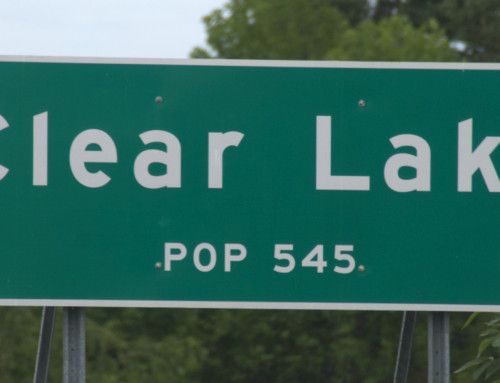Introduction
Fort Snelling is a landmark in the Twin Cities, one with a mixed record at the center of the introduction of European settlers in the area and the destruction of long-time Native American settlements. The historic site and the state park at river level both do a better job now of telling a more complete story about the area’s history.
Visitor Information
Direct your questions to the folks at the historic site (612.726.1171).
History
In the Dakota language, a place where two rivers meet is called bdote. One bdote is revered above all others, the place where life began in Dakota legend, the bdote of the Minnesota and Mississippi Rivers. For generations of Dakota, the area around this bdote was the place where the Dakota gathered for councils, religious ceremonies, and burials. As Europeans moved into Dakota lands, great tragedies would also take place at this bdote.
After the Louisiana Purchase, the US had a lot of new land to explore and interests to protect. Lewis and Clark headed west in 1804 to explore territory that was largely unknown along the Missouri River, while Lieutenant Zebulon Pike led a group of 20 men north from Fort Bellefontaine (near St. Louis) in 1805 into territory that was familiar but still full of mysteries. Pike’s expedition didn’t have the success of Lewis and Clark—he identified Cass Lake as the headwaters of the Mississippi (he was wrong) and many of his observations were off because he packed few scientific instruments—but he did get one thing done: he purchased land from the Dakota that would eventually be used for Fort Snelling, land that included the bdote of the Mississippi and Minnesota Rivers.
In retrospect, even that one accomplishment was probably not entirely legitimate. Only two of seven chiefs present at the negotiations actually signed the treaty, and it’s not clear that they really understood what they were agreeing to. I find it hard to believe that the Dakota leaders would willingly agree to give up territory that was so central to their life, but, what do I know. Regardless, the treaty ceded 155,520 acres defined as:
From below the confluence of the Mississippi and St. Peter {now Minnesota}, up the Mississippi to include the Falls of St. Anthony, extending nine miles on each side of the river.
The purchase price wasn’t specified in the treaty, although it was probably worth in the neighborhood of $200,000, or at least that’s what Pike thought. When Congress finally got around to ratifying the treaty in 1808, it set the purchase price at $2,000. The Dakota also got $200 in trade goods and 60 gallons of whiskey that Pike gave them directly, so I’m sure that evened things out. As for Pike, he later led an expedition out west, then was killed in the War of 1812. For his toil, he got a state park named in his honor in Iowa and a mountain in Colorado that he described but never set foot upon.
The US didn’t do anything with the former Dakota land until 1819, when Colonel Henry Leavenworth led 200 troops upriver from Prairie du Chien to establish a presence in the area, primarily to push out any remaining British influence and to protect the interests of fur traders. The troops initially set up camp where the village of Mendota is today, at a place they called the Cantonment of New Hope. They had a rough start. In the first winter, at least 40 soldiers died, most from scurvy.
In the spring, they moved about a mile north to the current site of the fort and called this place Camp Coldwater. Colonel Josiah Snelling replaced Leavenworth in August 1820 and got to work almost immediately building a new fort. When completed in 1825, the fort was shaped like a rhombus, with a tower at each angle and stone walls that surrounded the wooden barracks. The fort was first called Fort St. Anthony but was renamed for Colonel Snelling in 1824.
Life at the fort was maddeningly dull from most accounts, and desertion grew into a significant problem in the early 1820s. Fort commanders paid Native Americans in the area a bounty of $20 for each deserter they brought back to the fort. Colonel Snelling himself apparently drank a lot of whiskey to pass the time. As desertion increased, he became a stricter disciplinarian, sometimes ordering 200 lashes for wayward soldiers.
Fort Snelling was a remote outpost, but it became less isolated in 1823 when the Virginia reached the fort, the first steamboat to travel that far north on the Mississippi. In the next three years, 14 more steamboats would reach the fort.
Colonel Snelling was transferred to Jefferson Barracks (at St. Louis) in 1827. He died a year later at age 46. Zachary Taylor (later the 12th President) was fort commandant in 1828-29 when the fur trade was still going strong. He called the American Fur Company “the greatest set of scoundrels the world ever knew.” Another post commander was Seth Eastman (off and on from 1841 to 1848); he would later achieve fame for his paintings.
In 1827, fighting broke out between Dakota and Ojibwe near the fort. Four Dakota were captured by soldiers and Colonel Snelling ordered them turned over to the Ojibwe for justice; all four were killed. Two of the men were actually innocent, a fact that made the Dakota quite unhappy. In retaliation, they captured and killed a few random soldiers from the fort; commanders thought the men simply went missing, at least until their bodies turned up.
The fort, because of its location on the far western fringe of the US at that time, attracted many visitors (and a lot of missionaries). George Catlin, the painter, visited in 1835. The English novelist Captain Frederick Marryat showed up in 1837 but was asked to leave after he advised the Dakota not to fight with the US, should hostilities break out again between the US and England.
Dr. John Emerson was transferred to Fort Snelling around 1836. He brought with him an enslaved man named Dred Scott. Enslaved workers weren’t an uncommon sight at the fort. Colonel Snelling and other officers owned enslaved Africans, and it is likely that a couple dozen enslaved people lived at the fort any given point in time. Slavery in the territory was prohibited by the Missouri Compromise of 1820 (and by the Northwest Ordinance of 1787), but the legislation was ignored by officers at the fort. In fact, the federal government had a role in expanding slavery to the territory. Officers at the fort got an allowance to hire a servant. Some officers simply pocketed the extra cash, but others used the money to buy enslaved Africans at St. Louis and bring them up the Mississippi River to Fort Snelling.
While living at the fort, Scott met Harriet Robinson, an enslaved woman owned by Indian agent Lawrence Taliaferro. Harriet and Dred were married at the fort—by Taliaferro. In 1840, the Emersons moved to St. Louis, minus the doctor, who was sent to Florida to serve during the Seminole War. After the doctor’s death in 1843, the Scott’s sued his widow for their freedom. They based their suit on the doctrine of “once free, always free,” a claim they believed they could make because of the time they lived in territories where slavery was outlawed; that strategy had, in fact, been used successfully to free more than a hundred other formerly enslaved workers. A St. Louis jury awarded the Scotts their freedom in 1850, but the United States Supreme Court ruled in 1857 that the Scotts were personal property and must remain enslaved. The infamous decision inflamed the debate about slavery in the United States and made civil war nearly inevitable.
Treaties with the Ojibwe and Dakota in 1837 opened up land between the St. Croix and Mississippi Rivers to new settlement. Thousands of people moved into the area, not always respecting the boundaries of where it was legal to settle. In 1840, Major Plympton ordered soldiers to drive out squatters who were living below the fort on military land. Many of those folks moved on to form the core of St. Paul.
In 1857, Secretary of War John B. Floyd sold most of the reserve to Franklin Steel for $90,000, a deal completed in secret and with no competition. Floyd was, understandably, accused of corruption but the deal went through, anyway. Steele wanted to develop a new city at the site, but the crash of 1857 killed those plans. Instead, he turned to raising sheep on the property; he defaulted, anyway.
The fort was closed in 1858 but reactivated on April 29, 1861 to prepare troops for the Civil War. In August of 1862, a major conflict erupted with the Dakota who lived along the Minnesota River. The outbreak of hostilities was triggered primarily by Dakota frustrations with the failure of the US government to live up to its treaty obligations and with traders who were stealing money from their allocations. By the summer of 1862, many Dakota were starving and growing increasingly desperate. When a group of young Dakota men raided a farm and killed several settlers on August 18, the Dakota who lived along the lower Minnesota decided to launch a full assault against the Americans, in spite of the advice of leaders such as Taoyatedute (Little Crow) who believed it would be a fatal mistake. Even those reluctant leaders went along in the end, though.
During the conflict, Colonel Henry Sibley, the state’s first governor, organized soldiers at Fort Snelling. At first the Dakota were on the offensive and had the American forces in disarray, but when the Dakota assaults on the city of New Ulm and Fort Ridgely fell just short, the Dakota lost the advantage. By mid-September, the last major battle was over and the Dakota had surrendered. In the aftermath of the hostilities, 38 Dakota men were hanged in a public square in Mankato (on December 26) and Fort Snelling became a prison camp. Some 1,600 Dakota, mostly women and children, were interred until they could be permanently moved out of Minnesota. They wintered below the fort (at present-day Fort Snelling State Park) in horrid conditions. Many were attacked by nearby civilians, and disease and starvation were rampant. Upwards of 300 Dakota died before spring arrived, and they were shipped out to reservation land in South Dakota.
In 1864, two leaders of the Dakota uprising, Sakpedan (Little Six) and Wakanozhanzha (Medicine Bottle), were captured and returned to the fort, probably illegally as they had been living in Canada at the time of their capture. They were tried and convicted of killing civilians during the Dakota Conflict and sentenced to be hanged. According to legend, as the two men were standing on the platform on November 11, 1865 a train whistle sounded in the distance and Sakpedan, hearing the sound, said: “As the white man comes in, the Indian goes out.”
The fort was officially decommissioned after WWII, in 1946, but some buildings on the grounds are still being used by reservists. In the 1960s, the State of Minnesota approved funds to restore the fort as a historic site.
Fun Fact: The first Minnesota State Fair was held at Fort Snelling in 1860; they had a booth selling pemmican on a stick.
Exploring the Area
The beautifully reconstructed Fort Snelling State Historic Site (200 Tower Ave.; 612.726.1171) offers a glimpse at life for soldiers stationed in a remote outpost and tells the stories of the Dakota and early Europeans who moved into the area. On some days, actors in period clothing chat with visitors and answer questions. Tours are self-guided, so you can explore at your own pace.
Fort Snelling State Park (Post Road; 612.725.2389), located below the fort itself, is a wild place with multiple hiking and biking trails (or skiing in winter) spread across its 3,000 acres. The park includes Wita Tanka/Pike Island , which sits at the confluence of the Minnesota and Mississippi Rivers (the place called Bdote by the Dakota people). There is also a moving memorial to the Dakota who were placed in a concentration camp at this site after the Dakota Conflict of 1862.
The Mississippi National River and Recreation (651.290.4160) runs for 72 miles through the Twin Cities. While the National Park Service owns very little land along the corridor, it has many programs to help connect people to the river. Visit their website for a complete listing of places to enjoy the river.
Entertainment and Events
Fort Snelling hosts a number of special events throughout the year, especially on holiday weekends.
**Fort Snelling is covered in Road Tripping Along the Great River Road, Vol. 1. Click the link above for more. Disclosure: This website may be compensated for linking to other sites or for sales of products we link to.
Where to Go Next
See the Twin Cities Overview for tips on festivals, getting around, and more.
Heading downriver? Check out Mendota.
Heading upriver? Check out the Minneapolis guide.
Community-supported writing
If you like the content at the Mississippi Valley Traveler, please consider showing your support by making a one-time contribution or by subscribing through Patreon. Book sales don’t fully cover my costs, and I don’t have deep corporate pockets bankrolling my work. I’m a freelance writer bringing you stories about life along the Mississippi River. I need your help to keep this going. Every dollar you contribute makes it possible for me to continue sharing stories about America’s Greatest River!
Fort Snelling Photographs
©Dean Klinkenberg, 2024, 2021, 2018,2013,2011


